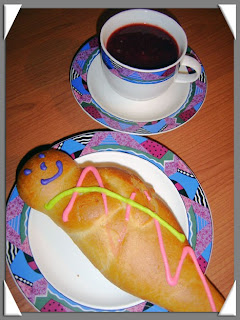
Thanksgiving is one of my favorite holidays. Ever.
I love summer changed to fall and the seasonal food it brings. I love cooking and making traditional foods. I love spending the time with family and friends and taking walks after sessions of comfort food. I love all the entrees and side dishes and trimmings and desserts and wine to toast and coffee to savor afterwards. I love the smells of the oven and of the fireplace and of the grass and trees dying and drying out.
While it may come to a surprise to some, Thanksgiving is a celebration of a historic American event, and therefore is not a world-renowned holiday (gasp). This being said, no one here really cares that there is no turkey to bake, no pumpkins to press into a pie, nor cranberries to make into a tart and lovely sauce, etc.
Instead, when I told my students about the holiday, what it means to me, and how my family celebrates, they asked why there wasn't dancing? I told them that because there is such an abundance of food, it is virtually impossible to dance. Plus, the men are all passed out in front of the tv, watching American football all day. One is also usually too full to enjoy an alcoholic beverage.
Since drinking and dancing are the backbone to any Ecuadorian holiday, they didn't seem to be very interested. Only amazing homemade food to be shared with friends and family? We do that everyday, it's called "almuerzo." They had me there.
But us three American English teachers weren't giving up that easily. Our patronage to a small restaurant for rotisserie chicken, cole slaw salad, menestra bean salad and rice served as our feast. We recalled our typical holiday plans, our favorite Thanksgiving dishes, and, of course, what we were thankful for on this calm and gently cool night on an equatorial island. There was a lot.
But, since you, dear readers, weren't there to witness, the least I can do is recount my humble words of gratitude. I am thankful for my opportunities. I am thankful for the freedom that I have in order to create the kind of life that I want to have, to follow my wishes and desires and not live with only whatever is handed to me. I am very fortunate to have so many loving people around me (even far away from where I am now), and to have the chance to meet so many new ones. I am fortunate to have such resilient health and and to be safe and secure. I am fortunate to have found a job doing something that I deeply enjoy, something that challenges me and calls on skills I both have and am continuing to develop. I am thankful that I am surrounded by still so many chances to learn new things. Last, but certainly not least, I am so grateful for meeting José, such an important person in my life, and to have the shared goal of spending our futures together.
All in all, I am grateful for all of it, good and bad, because as someone before me said, "Without the bitter, life wouldn't be so sweet."



